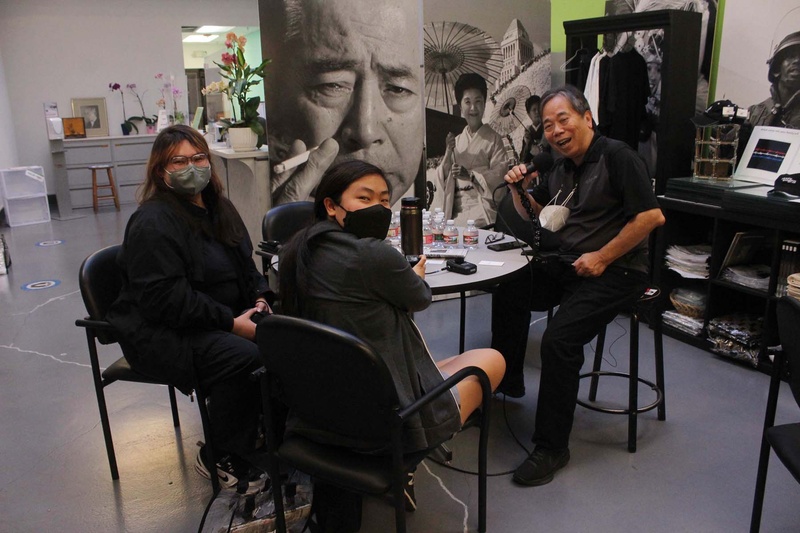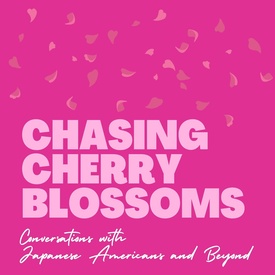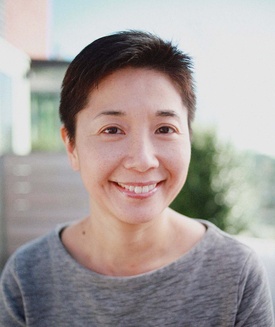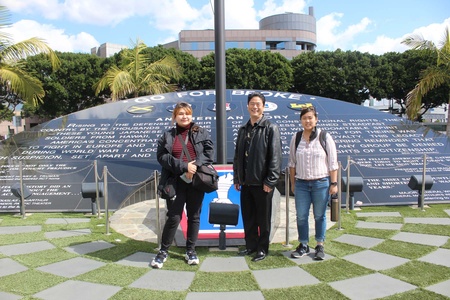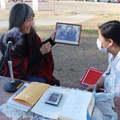The history of the Japanese and their descendants in America stretches back to the 19th century, following the 1868 Meiji Restoration, which led to rapid industrialization and the adoption of Western ideas. For much of Japan’s history, the island nation was isolated from the rest of the world. However, in 1853, Japan’s isolationism came to an end, leading to the gradual globalization of its economy and opening of its borders to foreign influence and opportunity. Many Japanese in turn immigrated to America in search of better economic conditions. Today, the U.S. is home to approximately 1.6 million people of Japanese descent.
The experiences of Japanese Americans are an integral part of our nation’s history, one marked by a legacy of resilience and community despite discrimination and hardship, particularly during and after World War II. While the war instilled much silence and shame among many Japanese Americans, more recent generations have shown a desire to reflect on their history, culture, and heritage.
One recent project that stands out and provides valuable dialogue is the Chasing Cherry Blossoms podcast, produced by award-winning Japanese filmmaker Reina Higashitani, along with university students Catherine Jie Baxter and Tinnley Sawan Subsin. This project shares stories relating to the Japanese American experience, exploring themes of identity and belonging while including stories and perspectives across multiple generations. Reina, Catherine, and Tinnley offer Discover Nikkei their perspectives and insight regarding this educational, documentary-style podcast series.
* * * * *
What inspired/motivated you to create the Chasing Cherry Blossoms podcast?
Higashitani: When the pandemic happened, film productions were shut down and I suddenly had this time to rethink what stories matter to me. As hostility toward Asian Americans was resurfacing, I was empowered by the AAPI community who came together and shared the same urgency in claiming power and speaking up against biases. Their actions inspired me to reconsider my artistic identity and whose stories I want to tell. Since COVID prevented me from in-person filmmaking, I sought an alternative outlet in audio storytelling as it is more accessible.
After the war, many Japanese Americans distanced themselves from Japanese culture and identity, such as abandoning the language and only speaking English. Do you think sharing people’s stories and experiences, such as with the Chasing Cherry Blossoms podcast, has the power to re-establish a sense of pride and community in one’s heritage?
Higashitani: I believe in the power of community storytelling. There is a strength in listening to stories of real people who went through similar experiences in the past. When we listen to those stories, the history becomes more personal and relatable. Perpetual foreigners, model minority stereotypes, racial and/or cultural identity, gentrification, minority vs. minority—they are all still contemporary issues that we deal with. Listening to the past experiences provides us a bigger perspective on how people dealt with those issues in the past and how they reflect on them now.
For example, many Japanese Americans blamed themselves for being incarcerated during WWII. We need to think about who had the privilege and power in that society to make them feel that way for such a long time. Those stories inform us about how we should navigate our relationship with our heritage in complex social situations.
Sawan Subsin: In my opinion, storytelling is one of the significant parts of the human experience. By sharing our own stories and experiences, we can go beyond the boundaries of labels and truly connect with one another. This creates a sense of unity and understanding between communities even if individuals never personally experienced those events.
After the release of Chasing Cherry Blossoms, I’ve had numerous friends and family members tell me that they resonated with the stories featured on the podcast even though they were not of Japanese descent. I truly believe that this is because highlighting stories from voices that are typically silenced not only uplifts those individuals in that community but also shows that there is space for representation of historically marginalized communities.
In Episode 1, Dr. Mitchell T. Maki talks about how we need to choose our words carefully when describing the Japanese American experience as it relates to WWII. For example, using the word “incarcerated” instead of “interned,” “forcibly excluded” instead of “evacuated,” and “concentration camp” instead of “internment camp.”
As a storyteller, what do you think about the importance of word choice, along with other features of communicating stories (i.e., images, music, etc.), and their ability to impact historical narratives and perceptions?
Higashitani: During the pandemic, I came across this African proverb that informed my attitude toward storytelling. “Until the lion tells a story, the hunter will always be the hero.” History is often told through perspectives of certain privileged groups. We have an opportunity to change that practice and claim an agency to tell a story from perspectives of traditionally marginalized groups.
When we change the perspective, history might look very different. Using proper language to accurately describe experiences of the underrepresented population instead of using euphemism used by privileged groups is an act of claiming the power to define our own history instead of letting only privileged groups of people define the history for us.
In Episode 5, Cindi Kishiyama-Harbottle describes an encounter with racism in high school after going to her boyfriend’s home being told that she is “not welcome here” by his mother, who mentioned that her brother died at Pearl Harbor. In contrast, Cindi’s daughter Alexis describes how in school, being Japanese was considered cool, with the popularity of things like Pokemon and Japanese anime.
Is this a sign of progress? Is there still work to be done in terms of how Japanese people and culture are viewed in the U.S.?
Higashitani: In challenging times, differences in race, ethnicity, class, or even gender become something to fear for. We need to keep reminding ourselves that personal differences lead to the enrichment of our society; they are something to embrace rather than fear or fight against. We might have made progress in talking about Japanese American experiences as the relationship between the U.S. and Japan also has changed in the past 80 years. However, we all know that the tension among various differences still exists and could flip anytime as we’ve seen conflicts with various races/ethnicities and cultures. We need to develop a sense of empathy toward one another especially in a challenging time.
To me, storytelling is compassion. It is to show compassion to other human beings and honor their experiences as your own. It is very important for me to think beyond differences and build empathy and contribute to the betterment of society.
Sawan Subsin: Although I do believe that there has been progress in the perception of Japanese Americans and the AAPI community in America, I do always think there is always work that needs to be done. When I think of communities such as the Japanese American community, I tend to think of all the different types of people that make up that community.
For instance, there are individuals who identify as Japanese American and are a part of the LGBTQIA+ community. Many individuals’ identities overlap, which leads to the need for intersectionality in all movements. I believe once we start to recognize these individuals’ identities as the norm rather than an exception, we will truly be able to uplift all the individuals within a community.

The “model minority myth” is mentioned a few times throughout the series. Could you expand on this topic and why it is important to address?
Jie Baxter: I’m adopted from China into a white family. The community I grew up in was predominantly white. While my mom did her best to get me connected to the Chinese community, it wasn’t the same as being raised in a Chinese American household, but still that doesn’t change the way I look. I always felt there was some kind of disconnect with people thinking, “She’s Chinese but she’s very Americanized.” I always felt I didn’t fit in either place.
What I talked a lot about was the model minority stereotype and how stereotypes are dangerous. Because they can often be perceived as compliments like “you’re such a good group of people. This is the way you should act.”
When in reality, it’s a way to pit minorities against each other. I’ve definitely felt that I need to be a certain way and act a certain way just because I look Asian and even though I wasn’t raised in an Asian household, I should still show these kinds of mannerisms in how I go about acting in my daily life.
I talked to Donna Cheung, a Chinese American who was the president of the Japanese American Citizen League Arizona Chapter. I asked her why as a Chinese American wanted to get involved in that. It’s because it is all kind of related and she wanted to get involved with it. I felt kind of drawn to this project because I was wanting to explore more of just my roots.
Higashitani: As Dr. Maki mentioned in our podcast, model minority might sound as a compliment, but it was used to pit minorities against one another. Any stereotypes are harmful especially when we continue to see certain racial or ethnic groups are depicted in a certain way in the media. Having more storytellers from traditionally underrepresented groups will help dismantle those stereotypes. By nurturing new generations of filmmakers with diverse backgrounds and perspectives, I hope to contribute to change the landscape in the media industry.
© 2024 Emily Hood


